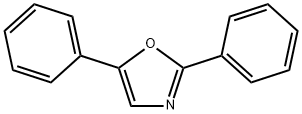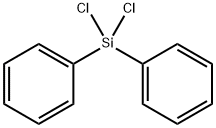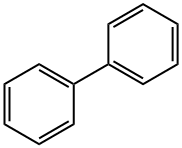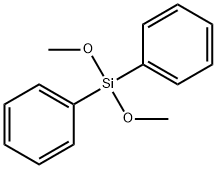2,5-Diphenyloxazole
Synonym(s):DPO;PPO
- CAS NO.:92-71-7
- Empirical Formula: C15H11NO
- Molecular Weight: 221.25
- MDL number: MFCD00005306
- EINECS: 202-181-3
- SAFETY DATA SHEET (SDS)
- Update Date: 2024-12-18 14:08:52

What is 2,5-Diphenyloxazole?
Chemical properties
light beige solid
The Uses of 2,5-Diphenyloxazole
PPO can be used as a dopant that improves the photo-electric feedback of plastic scintillators which are used as radiation detectors for nuclear materials. It can be coated on peptide substrates to facilitate radioactive labelling which can enable determination of substrate specificity of lysine methyltransferase enzymes. It may also be used in the fabrication of organic luminescent materials which can be used in light emitting diodes (LEDs).
What are the applications of Application
2,5-Diphenyloxazole is used for liquid scintillation spectrometry
Synthesis Reference(s)
Journal of the American Chemical Society, 88, p. 1844, 1966 DOI: 10.1021/ja00960a066
The Journal of Organic Chemistry, 36, p. 1937, 1971 DOI: 10.1021/jo00813a021
General Description
2,5-Diphenyloxazole (PPO) is an oxazole that can be used as a scintillator and a laser dye. It has fluorescence at a wavelength of 375 nm. It can be used as a wavelength shifter in liquid samples due to their high quantum yield and large strokes shift.
Hazard
May cause irritation
Synthesis
The synthesis of 2,5-Diphenyloxazole is as follows:
In a 5000L enamel reactor with mechanical stirring and a thermometer, add benzoylaminoacetic acid (179 kg, 1 km) and thionyl chloride (238 kg, 2 km), react at 50°C, and monitor the sample until the compound is fully reacted. Unreacted thionyl chloride is distilled off to obtain benzoylaminoacetyl chloride. Cool down to 50°C, add benzene (780 kg, 10 kmol) to the reactor andAluminum trichloride (267 kg, 2 kmol), heated to reflux for 3 hours.The obtained N-benzoyl-ω-aminoacetophenone reaction solution was cooled to 30°C, 50 wt% sulfuric acid (392 kg, 2 kmol) was added, and the temperature was slowly raised to 100°C, and the reaction was completed at this temperature. Excess benzene was distilled off, the reaction solution was cooled to 30°C, water (1568 kg) was added dropwise to the reactor, and a white solid was precipitated, filtered, and rectified to obtain 2,5-diphenyloxazole of about 202 kg. The yield was 91.4%, the content was 99.3% (HPLC).
Purification Methods
Distil it in steam and crystallise it from ligroin. [Beilstein 27 III/IV 1437.]
Properties of 2,5-Diphenyloxazole
| Melting point: | 72-74 °C(lit.) |
| Boiling point: | 360 °C(lit.) |
| Density | 1.06 |
| vapor pressure | 0.002Pa at 25℃ |
| refractive index | 1.6231 (estimate) |
| Flash point: | 360°C |
| storage temp. | Sealed in dry,Room Temperature |
| solubility | very faint turbidity in Methanol |
| pka | 0.39±0.10(Predicted) |
| form | Liquid |
| color | White |
| Water Solubility | NEGLEGIBLE |
| BRN | 157021 |
| Stability: | Stable. Incompatible with strong oxidizing agents. |
| CAS DataBase Reference | 92-71-7(CAS DataBase Reference) |
| NIST Chemistry Reference | Oxazole, 2,5-diphenyl-(92-71-7) |
| EPA Substance Registry System | Oxazole, 2,5-diphenyl- (92-71-7) |
Safety information for 2,5-Diphenyloxazole
| Signal word | Warning |
| Pictogram(s) |
 Exclamation Mark Irritant GHS07 |
| GHS Hazard Statements |
H302:Acute toxicity,oral H319:Serious eye damage/eye irritation H413:Hazardous to the aquatic environment, long-term hazard |
| Precautionary Statement Codes |
P305+P351+P338:IF IN EYES: Rinse cautiously with water for several minutes. Remove contact lenses, if present and easy to do. Continuerinsing. |
Computed Descriptors for 2,5-Diphenyloxazole
2,5-Diphenyloxazole manufacturer
Rivashaa Agrotech Biopharma Pvt. Ltd.
New Products
Tert-butyl bis(2-chloroethyl)carbamate (S)-3-Aminobutanenitrile hydrochloride N-Boc-D-alaninol N-BOC-D/L-ALANINOL N-octanoyl benzotriazole 4-Hydrazinobenzoic acid 3,4-Dibenzyloxybenzaldehyde 1,1’-CARBONYLDIIMIDAZOLE R-2-BENZYLOXY PROPIONIC ACID 1,1’-CARBONYLDI (1,2-4 TRIAZOLE) 4-HYDROXY BENZYL ALCOHOL 3-NITRO-2-METHYL ANILINE (2-Hydroxyphenyl)acetonitrile 4-Bromopyrazole 5-BROMO-2CYANO PYRIDINE 5,6-Dimethoxyindanone 5-broMo-2-chloro-N-cyclopentylpyriMidin-4-aMine 4-methoxy-3,5-dinitropyridine 2-(Cyanocyclohexyl)acetic acid 2-aminopropyl benzoate hydrochloride 1-(4-(aminomethyl)benzyl)urea hydrochloride tert-butyl 4- (ureidomethyl)benzylcarbamate diethyl 2-(2-((tertbutoxycarbonyl)amino) ethyl)malonate Ethyl-2-chloro((4-methoxyphenyl)hydrazono)acetateRelated products of tetrahydrofuran








You may like
-
 2,5-Diphenyloxazole 98%View Details
2,5-Diphenyloxazole 98%View Details -
 2,5-Diphenyloxazole, scintillation grade CAS 92-71-7View Details
2,5-Diphenyloxazole, scintillation grade CAS 92-71-7View Details
92-71-7 -
 2,5-Diphenyloxazole scintillation grade (PPO) ExiPlus CAS 92-71-7View Details
2,5-Diphenyloxazole scintillation grade (PPO) ExiPlus CAS 92-71-7View Details
92-71-7 -
 2,5-Diphenyloxazole scintillation grade (PPO) CAS 92-71-7View Details
2,5-Diphenyloxazole scintillation grade (PPO) CAS 92-71-7View Details
92-71-7 -
 Polyphenyleneoxide CASView Details
Polyphenyleneoxide CASView Details -
 Polyphenyleneoxide CASView Details
Polyphenyleneoxide CASView Details -
 Polyphenyleneoxide CASView Details
Polyphenyleneoxide CASView Details -
 Polyphenyleneoxide CASView Details
Polyphenyleneoxide CASView Details